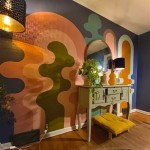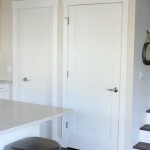Mid-Century Modern Living Room Design: A Timeless Aesthetic
Mid-century modern interior design, a dominant force from the mid-1940s to the 1960s, continues to resonate with homeowners and designers alike. Its enduring appeal lies in its clean lines, functional forms, and optimistic spirit, reflecting a post-war era of innovation and progress. The living room, often considered the heart of the home, became a prime canvas for this design movement. Understanding the core principles and key elements of mid-century modern living room design is crucial for creating a space that is both aesthetically pleasing and practically livable.
This design style departed significantly from the ornate and heavily decorated interiors of previous eras. Instead, it embraced simplicity, natural materials, and a connection to the outdoors. Open floor plans, large windows, and a focus on functionality defined the mid-century modern approach to living spaces. The goal was to create a comfortable and inviting environment that reflected a modern lifestyle.
Emphasis on Clean Lines and Organic Shapes
One of the most defining characteristics of mid-century modern design is its emphasis on clean lines. Furniture pieces are typically characterized by their simple geometric forms with minimal ornamentation. Straight lines and smooth curves often coexist, creating a harmonious balance. This preference for clean lines extends to architectural features as well, such as exposed beams and minimalist detailing.
Complementing the clean lines are organic shapes. Designers drew inspiration from nature, incorporating curves and rounded edges into furniture designs. This is evident in iconic pieces such as the Eames molded plywood chairs or the Noguchi coffee table, which features a biomorphic glass top supported by sculpted wooden legs. These organic shapes add a sense of softness and visual interest to the otherwise streamlined aesthetic.
The juxtaposition of clean lines and organic shapes is a key element in achieving a balanced mid-century modern living room. The linear forms provide structure and order, while the organic shapes introduce a sense of fluidity and naturalness. This combination creates a visually appealing and comfortable space that avoids feeling sterile or rigid.
Materials used in mid-century modern furniture further enhance these design principles. Wood, particularly walnut, teak, and oak, is prominently featured, often with a natural finish that highlights the wood grain. Metal, typically steel or chrome, is used for legs, frames, and accents, adding a touch of industrial chic. Upholstery fabrics tend to be durable and textured, with patterns that range from geometric prints to solid colors in earthy tones.
The Role of Natural Light and Open Space
Mid-century modern design places a strong emphasis on natural light. Large windows, often floor-to-ceiling, are a common feature, allowing ample sunlight to flood the living room. This abundance of natural light not only brightens the space but also helps to connect the interior with the surrounding landscape.
Open floor plans are another hallmark of mid-century modern design. Walls are minimized to create a sense of spaciousness and flow between the living room, dining area, and kitchen. This open layout promotes a feeling of connectivity and encourages social interaction. It also allows for greater flexibility in arranging furniture and creating distinct zones within the larger space.
To maximize the impact of natural light and open space, mid-century modern living rooms often incorporate minimalist window treatments. Sheer curtains or blinds allow light to filter through while providing privacy. Heavy drapes are generally avoided, as they can block natural light and detract from the clean lines of the design.
The strategic use of mirrors can also enhance the sense of space and light. Placing a large mirror on a wall opposite a window can reflect natural light throughout the room, making it feel brighter and more expansive. Mirrors can also be used to create visual interest and add depth to the space.
The integration of indoor plants is another way to connect the living room with nature. Plants not only add a touch of greenery but also help to purify the air and create a more calming atmosphere. Popular choices for mid-century modern living rooms include snake plants, fiddle-leaf figs, and succulents, all of which are relatively low-maintenance and visually appealing.
Color Palette and Accent Pieces
The color palette of a mid-century modern living room typically consists of a mix of neutral tones and bold accent colors. Earthy hues such as brown, beige, olive green, and mustard yellow are often used as the base colors, creating a warm and inviting atmosphere. These neutral tones are then complemented by pops of color, such as orange, teal, turquoise, and red, which add visual interest and personality to the space.
Accent pieces play a crucial role in completing the mid-century modern living room. These can include artwork, lamps, throw pillows, and decorative objects. Artwork often features abstract patterns, geometric shapes, or bold graphic prints, reflecting the artistic trends of the mid-20th century. Lamps typically have simple, sculptural designs, often with conical or spherical shades. Throw pillows can add a touch of texture and color, while decorative objects such as ceramic vases, wooden sculptures, and vintage accessories can add personality and character to the space.
The selection of accent pieces should be carefully considered to ensure they complement the overall design aesthetic. It is important to avoid clutter and maintain a sense of balance. Each accent piece should serve a purpose, whether it is to add visual interest, provide functionality, or reflect the homeowner's personal style.
Textiles play a significant role in the mid-century modern living room. Upholstery fabrics, rugs, and curtains often feature geometric patterns, abstract designs, or textured weaves. Natural fibers such as wool, cotton, and linen are commonly used, adding warmth and comfort to the space. Rugs are often used to define different zones within the open floor plan, while curtains can provide privacy and control the amount of natural light entering the room.
Lighting is another key element in creating the desired ambiance in a mid-century modern living room. In addition to natural light, artificial lighting plays a crucial role in illuminating the space and creating a warm and inviting atmosphere. Table lamps, floor lamps, and pendant lights are often used to provide task lighting, ambient lighting, and accent lighting. The placement of lighting fixtures should be carefully considered to ensure they are both functional and aesthetically pleasing.

45 Irresistibly Stylish Midcentury Modern Living Room Idea

Mid Century Modern Living Room Margarita Bravo

45 Irresistibly Stylish Midcentury Modern Living Room Idea

Mid Century Modern Interior Design What Is It And Stunning Examples

35 Retro Mid Century Modern Living Rooms

What Is Mid Century Modern Interior Design Stickley Brand

380 Best Mid Century Modern Living Room Design Ideas Designs

25 Best Mid Century Modern Interior Design Ideas In 2025 Decorilla

Mid Century Modern Living Room Ideas For Functionality Comfort Decoist

Mid Century Modern Interior Design 20 Ways To Timeless Elegance
Related Posts








